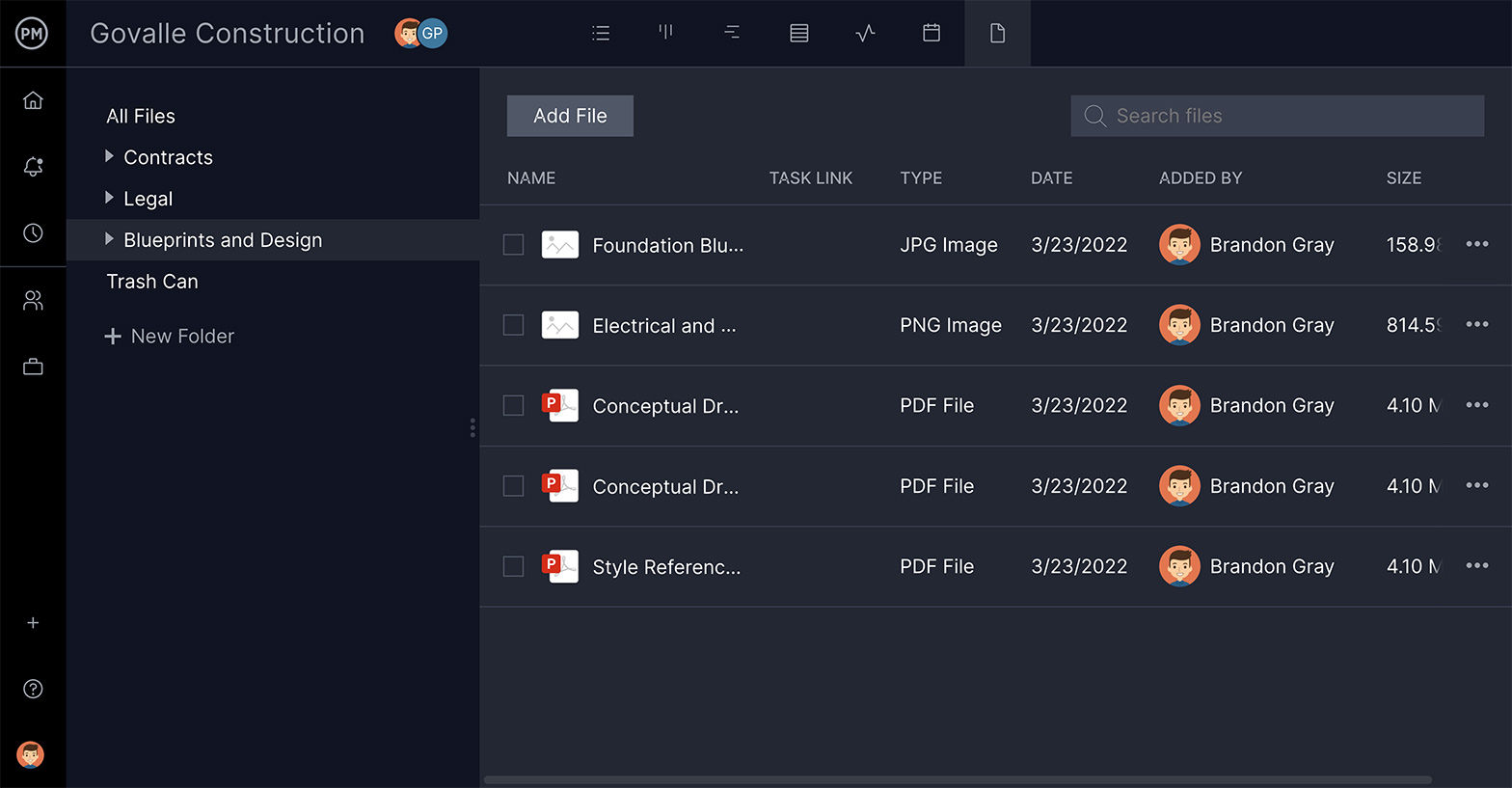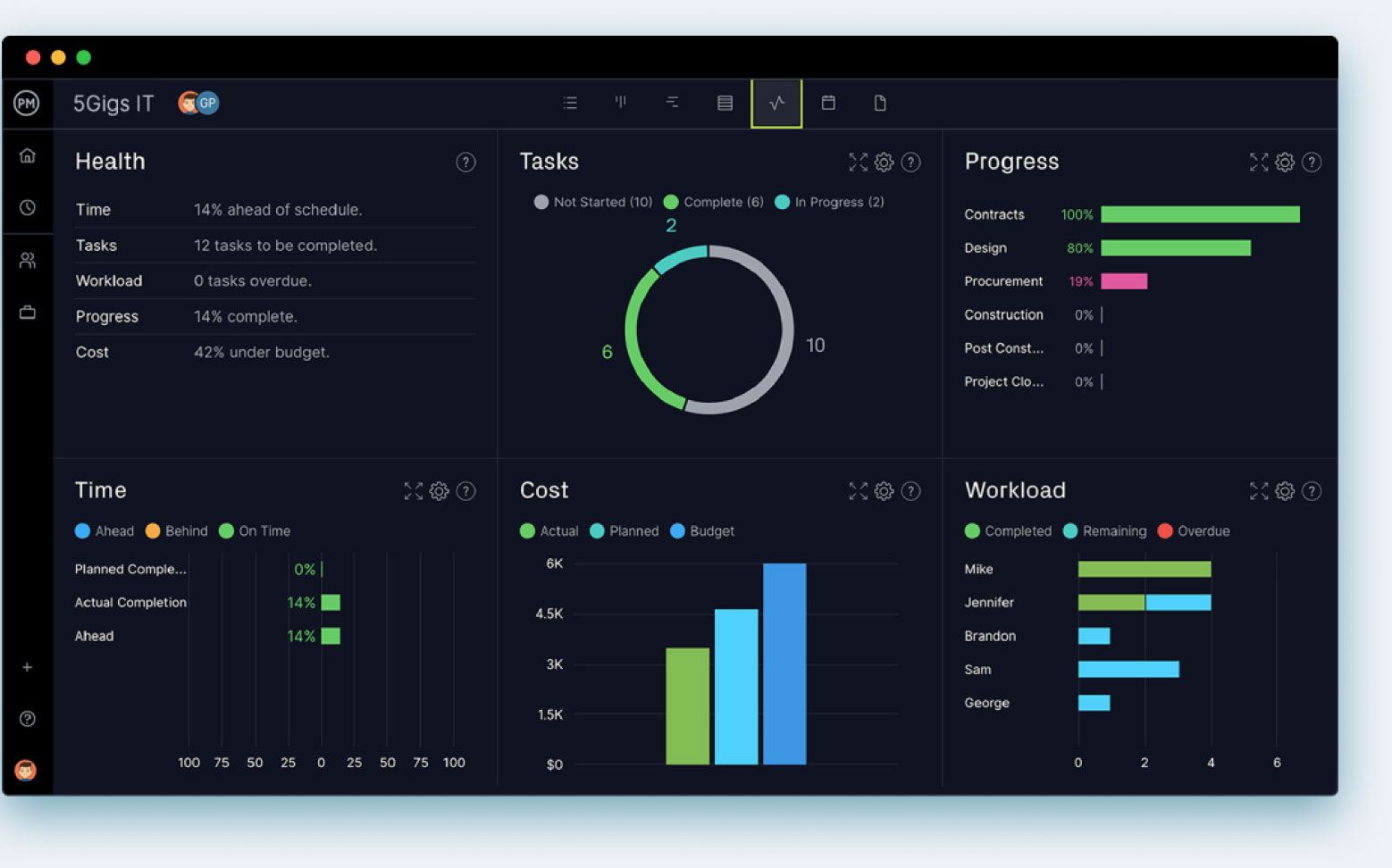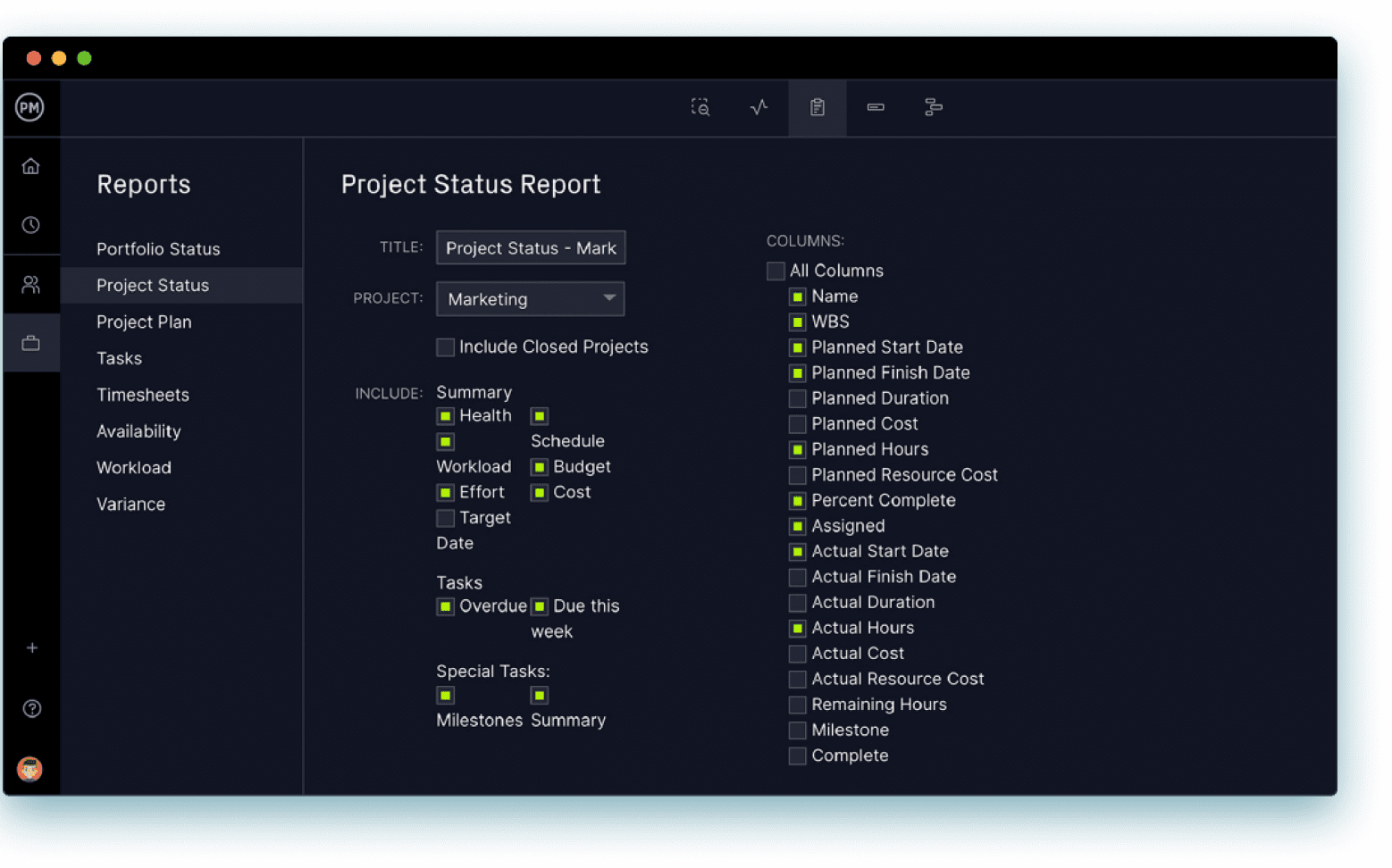There are many things that are needed when managing a project. Front of mind are resources and intangible things like leadership, experience and general know-how. But there are also tangible items that are just as important. Some of these are called organizational process assets.
These organizational process assets are critical to a project’s success and its operations. To make sure you understand what organizational process assets are, first, we’ll define the terms and explain their importance. Then we’ll get into some examples to fully illustrate their meaning.
What Is an Organizational Process Asset?
An organizational process asset is a tangible resource that’s used to guide the management of an organization’s projects and operations. These tangible assets can be templates, contracts, processes, reports and financial statements which are usually managed by the project management office (PMO).
Officially defined by the Project Management Institute’s Project Management Body of Knowledge (PMI’s PMBOK) as “the plans, processes, policies, procedures and knowledge bases specific to and used by the performing organization,” operational process assets influence the management of a project.
Besides the examples above, an operational process asset can be any practice or knowledge from anything used to execute or govern the project, even lessons learned from previous projects, programs or project portfolios. Organizational process assets may also include schedules, risk data and earned value data.
From standardized guidelines, proposal evaluation criteria and work breakdown structure templates to project closure guidelines, change control procedures and other project files, organizational process assets need organization. ProjectManager is award-winning project management software with unlimited file storage to make your organizational process assets accessible. Our cloud-based software means you can access project documents anywhere and at any time. Get started with ProjectManager today for free.

Why Are Organizational Process Assets Important for Project Management?
Because an organizational process asset includes everything that an organization needs to manage its projects, from plans, policies and procedures to guidelines, they’re instrumental in the planning stage of any project. They provide a map for the project manager and project team to follow, giving them an understanding of what is and what is not acceptable as they plan, execute and manage the project.
There’s another way that organizational process assets are important in the planning process. Lessons learned after a project has been completed are another organizational process asset. Therefore, these organizational process assets archived from previous projects can inform how to improve the project management of new projects.
Outside of project planning, organizational process assets are helpful when onboarding a new hire. It makes clear the roles and responsibilities of the new employee, which gets them up and running faster. They’re aware of what’s expected of them and can become self-sufficient and a productive member of the team. Organizational process assets are also helpful for established employees as a tool for their development.
Types of Organizational Process Assets
We’ve listed what falls under the term organizational process assets, but it’s time to look a bit closer at the various types of assets and what they are. In general, you can divide organizational process assets into two main categories: processes, policies, procedures and organizational knowledge bases. Let’s define each of these types.
Processes
Processes are the interrelated steps or activities that are done to complete a task. Another way to look at processes is as a simple overview of workflows. They are a way to quickly understand how something has to be done for management and for the project team alike. Processes can be expressed as checklists, process maps, forms and tutorials. They increase efficiency, simplify onboarding, archive organizational knowledge, help with continuous improvement and make organizations more agile.
Policies
Policies are at a higher level than processes. They’re more concerned with culture, strategy and decision-making in the organization and they’re used to guide how decisions at the organization are made. Policies are important because they help an organization stay compliant with the law. They also help to make sure that internal processes are consistent, help organizations navigate crises, add to the overall efficiency of operations and provide accountability by clarifying and reinforcing standards of professionalism.
Project Documentation
Project documents are created by the project manager during the developmental process of a project. This project documentation will guide the project team, who are expected to follow certain procedures, specifications and more. Examples of project documents are the project plan, schedule and budget.
Get your free
Multiple Project Tracking Template
Use this free Multiple Project Tracking Template for Excel to manage your projects better.
Procedures
A procedure is a bit different than a process in that not every activity requires one. Simple tasks would only be made more complicated by having to follow a specific procedure. Therefore, creating a procedure should only be done when it’s beneficial and clarifies a process. Processes that are lengthy, complex, sensitive, must be consistent, involve documentation, involve significant change or have serious consequences should have procedures. This will help reduce errors and deliver better results by plugging holes in workflows, meeting legal requirements, driving growth and generally helping improve the organization.
Organizational Knowledge Bases
In a different category from the previous three organizational process assets are organizational knowledge bases, which are repositories of information about topics, products, services and other assets like policies and procedures. In a sense, this is a library, often digital, that holds all the other assets. The organizational knowledge bases are both for internal and external use, the latter being customer-facing. For example, an external organizational knowledge base could be the help section of the business website. There are many reasons for an organizational knowledge base. They offer easy access to information, lower training costs by streamlining onboarding and support various learning styles by presenting information in a variety of formats.
Enterprise Environmental Factors vs. Organizational Process Assets
As we’ve discussed, organizational process assets are both physical and knowledge-based and are beneficial to the work and production done by an organization. They’re used by project managers and their teams to run projects more efficiently, and uniformly and remain compliant with regulations.
Enterprise environmental factors are the practices, procedures, legislation and policies regarding the organization that may affect how the project manager and their team execute tasks and manage projects. This can be health and safety regulations, codes of conduct, governmental standards, business structure, etc.
The difference between the two is that enterprise environmental factors set boundaries and constraints for a project and organizational process assets capture knowledge, best practices and resources to run those projects better.
9 Examples of Organizational Process Assets
We’ve noted the two categories that make up organizational process assets but haven’t gone into depth about some examples from those different types. It’ll be helpful to go through several examples of organization process assets to better illustrate what they are. Here are some of the more common examples.
1. Organizational Standard Processes
Organizational standard processes are the various procedures established by an organization to execute tasks, such as human resource management, financial reporting, procurement policies, internal auditing, etc. This allows organizations to better manage their activities by defining what forms to use, and having a definite set of steps for processes, reporting, payment and so forth. This provides a standard direction and controls the processes.
2. Project Management Software
In terms of project management software, organizational process assets are the documented processes, such as templates and guidelines that are used by the project manager and the project team. Project management software can store these organizational process assets and also execute various processes, such as the project plan and tasks.
3. Project Management Templates
Project management templates have been mentioned a few times so it’s time to define this organizational standard process. They’re created to save time and make work for project teams more efficient by designing pre-built workflows, project views and tasks. This streamlines the early stages of the project through its completion.
4. Project Management Methodologies
Project management methodologies are a set of tools and guidelines that are used to manage projects. They help project managers and their teams work more efficiently and perform better. They provide a repeatable series of steps and principles. There are many different types of project management methodologies, from the more structured waterfall approach to working in an iterative, agile environment.
5. Project Reporting Guidelines
Project reports are vital tools to monitor progress and performance during the project’s execution and keep stakeholders updated. Project reporting guidelines will define the formats, reporting frequency, channels of communication and more for all project reporting.
6. Project Performance Metrics
Project performance metrics are data sets, formulas and calculations that give the project manager the ability to measure the progress and performance of a project. Not only do they help project managers track their projects and make sure they’re meeting goals set by the schedule and budget, but they also keep stakeholders informed and updated on progress and costs so they’re comfortable with the state of the project.
7. Project Controls
Project controls process and analyze metrics and work to keep costs and schedules on track. Project controls include initiating, planning, monitoring and controlling, communicating and closing out project costs and schedules. These are all in the service of managing the scope, time, money and resources of the project.
8. Project Audits
A project audit is used to figure out the true status of the work being performed on a project and if it is meeting the project statement of work, including the schedule and budget constraints. These audits are done independently and are a structured assessment of the state of the project by a competent examiner.
9. Financial Data Repositories
Financial data repositories are centralized storage of a project’s financial data and are archived after the completion of the project to help steer the financial well-being of future projects. It’s used to collect, manage and store financial data for analysis, sharing and reporting.
Multiple Project Tracking Template
This free multiple project tracking template is the perfect example of an organizational process asset that you can use to keep track of the costs, percent of completion, due dates and priority of multiple projects and programs in your portfolio.
We offer a variety of free PMO templates you can use to manage all aspects of your projects, programs and portfolios.
How ProjectManager Helps With Organizational Process Assets
The management of organizational process assets is greatly improved by the use of project management software. ProjectManager is award-winning project management software that not only has unlimited file storage to act as a centralized hub for all your organizational process assets but has industry templates to get you started. You can archive your projects after they’re done and use them for historical data to help you plan new projects.
Create Customizable Reports
Reporting is one of the organizational process assets. Our software has customizable reports that can be filtered to show only the data you want to see. Then you can share them as a PDF or print them out for stakeholder presentations, as well as archive them on the tool. That way you can access them whenever you want. You can easily generate status reports or portfolio status reports and reports on workload, variance, timesheets and more.
 Track Metrics in Real Time
Track Metrics in Real Time
Project metrics help you keep the project on schedule and within its budget. Our real-time dashboard allows you to get a high-level overview of your project whenever you want. Just toggle over and view the six charts and graphs that display live data on time, cost, tasks and more. Unlike lightweight alternatives, our real-time dashboard doesn’t require any lengthy setup. It’s ready to go when you are.

Our software is flexible enough to use with whichever project management methodology you prefer. Our Gantt charts are designed for structured waterfall planning, with task dependencies, filtering for the critical path and baselines that can be set to track project variance. But there are multiple project views, from task lists, sheet and calendar views to kanban boards, which are preferred by agile scrum teams. Each project view is updated simultaneously so cross-functional teams can collaborate in the same tool.
ProjectManager is cloud-based project management software that connects teams whether they’re working in the office, out in the field or anywhere in the world. They can share files, comment at the task level and more to foster greater collaboration. Join teams at companies as diverse as Avis, Nestle and Siemens who use our software to succeed. Get started with ProjectManager today for free.


